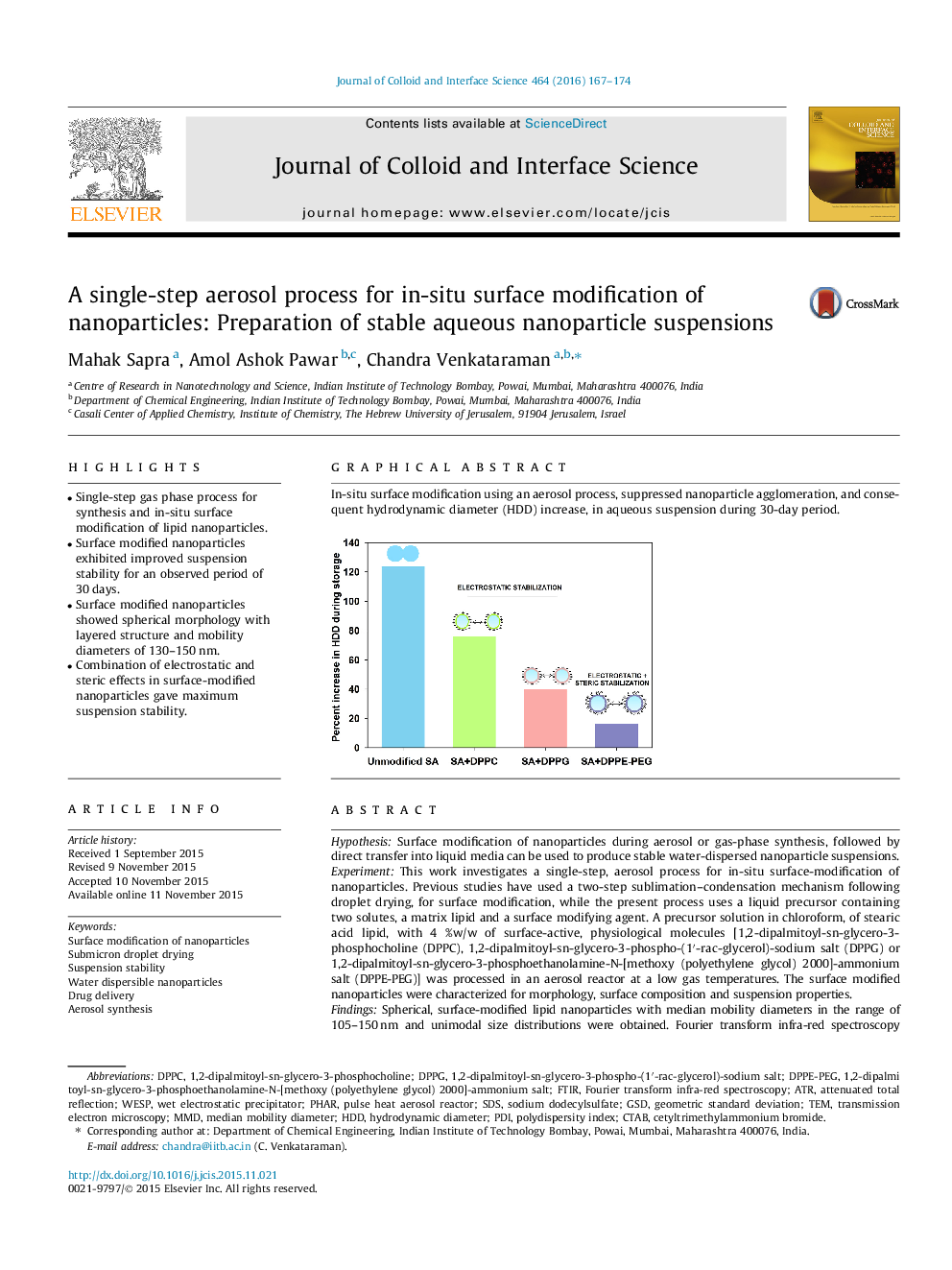| Article ID | Journal | Published Year | Pages | File Type |
|---|---|---|---|---|
| 606432 | Journal of Colloid and Interface Science | 2016 | 8 Pages |
•Single-step gas phase process for synthesis and in-situ surface modification of lipid nanoparticles.•Surface modified nanoparticles exhibited improved suspension stability for an observed period of 30 days.•Surface modified nanoparticles showed spherical morphology with layered structure and mobility diameters of 130–150 nm.•Combination of electrostatic and steric effects in surface-modified nanoparticles gave maximum suspension stability.
HypothesisSurface modification of nanoparticles during aerosol or gas-phase synthesis, followed by direct transfer into liquid media can be used to produce stable water-dispersed nanoparticle suspensions.ExperimentThis work investigates a single-step, aerosol process for in-situ surface-modification of nanoparticles. Previous studies have used a two-step sublimation–condensation mechanism following droplet drying, for surface modification, while the present process uses a liquid precursor containing two solutes, a matrix lipid and a surface modifying agent. A precursor solution in chloroform, of stearic acid lipid, with 4 %w/w of surface-active, physiological molecules [1,2-dipalmitoyl-sn-glycero-3-phosphocholine (DPPC), 1,2-dipalmitoyl-sn-glycero-3-phospho-(1′-rac-glycerol)-sodium salt (DPPG) or 1,2-dipalmitoyl-sn-glycero-3-phosphoethanolamine-N-[methoxy (polyethylene glycol) 2000]-ammonium salt (DPPE-PEG)] was processed in an aerosol reactor at a low gas temperatures. The surface modified nanoparticles were characterized for morphology, surface composition and suspension properties.FindingsSpherical, surface-modified lipid nanoparticles with median mobility diameters in the range of 105–150 nm and unimodal size distributions were obtained. Fourier transform infra-red spectroscopy (FTIR) measurements confirmed the presence of surface-active molecules on external surfaces of modified lipid nanoparticles. Surface modified nanoparticles exhibited improved suspension stability, compared to that of pure lipid nanoparticles for a period of 30 days. Lowest aggregation was observed in DPPE-PEG modified nanoparticles from combined electrostatic and steric effects. The study provides a single-step aerosol method for in-situ surface modification of nanoparticles, using minimal amounts of surface active agents, to make stable, aqueous nanoparticle suspensions.
Graphical abstractIn-situ surface modification using an aerosol process, suppressed nanoparticle agglomeration, and consequent hydrodynamic diameter (HDD) increase, in aqueous suspension during 30-day period.Figure optionsDownload full-size imageDownload high-quality image (106 K)Download as PowerPoint slide
